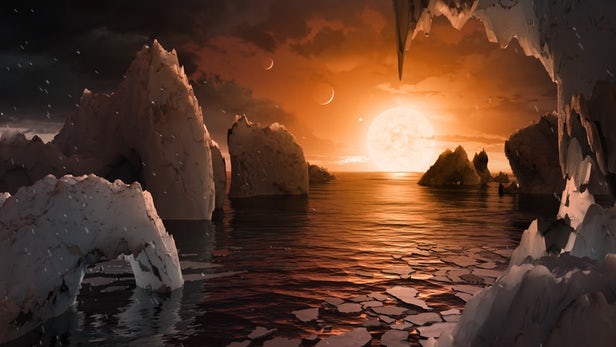This is not the first time NASA has discovered Earth-like planets and these two Earth-like planets on which scientists now claim life can flourish were announced a long time ago. The planets are located in the Trappist-1 system where seven worlds are orbiting a dwarf star 39 light years away.
The scientists have always believed that life could exist on these planets but have now further narrowed them down to planets d and e to have the perfect conditions for life to flourish. Scientists are now relying on the new technologies like the James Webb Telescope to study these planets in more detail.
The Trappist-1 is the only system with such a large number of Earth-like planets and they are all probably rocky planets and are referred to by letters b through h. Planetary Science Institute carried out a study to calculate the balance between tidal heating and heat transport by convection in the mantles of each planet.
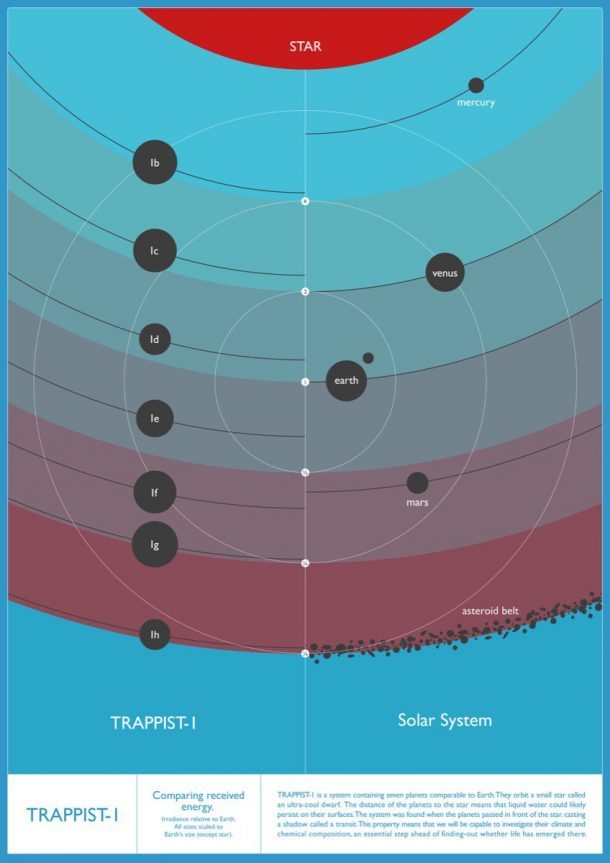
“Assuming the planets are composed of non-compressible iron, rock, and water, we determine possible interior structures for each planet”, researchers led by Dr Amy Barr, wrote in the paper set to be published in the journal Astronomy & Astrophysics. “With the exception ofTrappists-1c, all seven of the planets have densities low enough to indicate the presence of significant water in some form.”
The study indicates that planets b and c are likely to have partially molten rock mantles and planets d and e are most likely to be habitable due to moderate surface temperatures and modest amounts of tidal heating. Also, their heat fluxes are low enough to avoid entering a runaway greenhouse state.
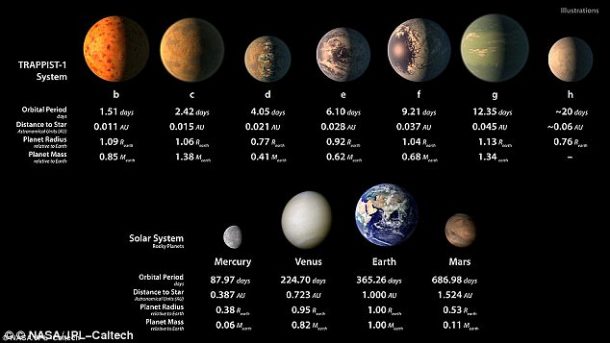
“Because their orbits are eccentric –not quite circular – these planets could experience tidal heating just like the moons of Jupiter and Saturn,” said Dr Barr from the Planetary Science Institute. The Trappist 1 star is old and dim so the surface temperature of the planets is relatively low as compared to other systems.
The temperature range is from 400 degrees Kelvin, colder than Venus to 167 degrees Kelvin, colder than Earth’s poles. The planets have the orbital period of just a couple of days and orbit very close to the star. Being 39 light years away makes it relatively close to our system considering the fact that Milky Way stretches 100,000 light-years across.
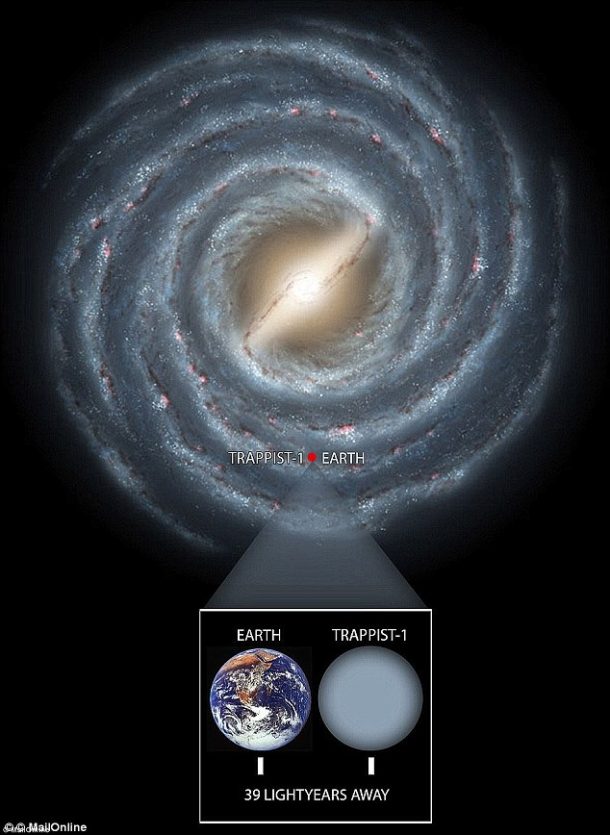
However, the system is still too far away to be ever reached by humans. At least not with the current technology. “The chances for humans reaching the system at the moment are not very good,” study co-author Dr Amaury Triaud, an astronomer at Cambridge University, told MailOnline. “Our technology is really far from even sending a robotic probe, and the feasibility of humans surviving long-term space travel is completely unknown. Unless we find a new physical process to harness energy I don’t see us colonising these planets in our lifetime, but then maybe someone will be inspired by the system and discover the means to go there, who knows!”
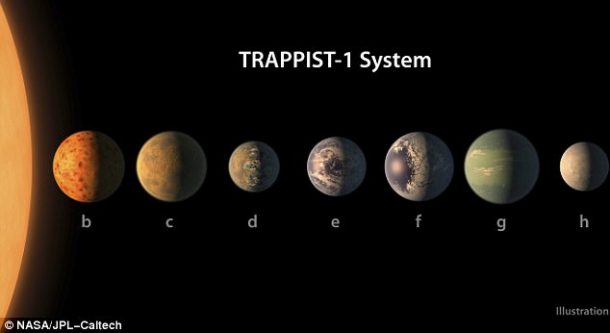
Fellow astronomer Professor Ignas Snellen of the Netherlands’s Leiden University, not involved in the study, agrees. “Although the star is relatively nearby that is still very very far for humans to travel. It would take hundreds of thousands of years to get there, maybe more.”
Even though this system is out of reach. It is an exciting prospect that ours is not the only habitable planet in the universe. Maybe someday, we will discover a system that is actually reachable. The search continues.

